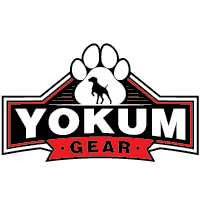Understanding the Importance of Mental Stimulation
Dogs, much like humans, thrive on mental stimulation. While daily walks and physical exercise are essential for their well-being, engaging their minds is equally important. Dog puzzles provide an excellent way to challenge your pup’s cognitive abilities, keep them entertained, and prevent behavioral issues stemming from boredom.
Types of Dog Puzzles
Dog puzzles come in various forms, each designed to cater to different skill levels and preferences. Here are a few common types:
Treat-Dispensing Toys
These toys typically involve hiding treats inside a compartment that your dog must figure out how to release. Popular examples include the Kong Classic and Nina Ottosson’s treat puzzle toys. They encourage your pup to use their problem-solving skills in exchange for a tasty reward.
Interactive Puzzles
Interactive puzzles often involve complex designs where dogs must move pieces around, lift flaps, or press buttons to uncover hidden treats. These puzzles can vary in complexity, allowing you to gradually challenge your dog as they become more adept.
Hide and Seek Toys
These puzzles incorporate plush toys that are hidden within a larger toy, such as a tree trunk or burrow. Dogs must “hunt” for the smaller toys, engaging their natural foraging instincts. The Outward Hound Hide-A-Squirrel is a popular example of this type.
Snuffle Mats
Snuffle mats are fabric mats with numerous folds and pockets where you can hide treats. Your dog must use their nose and paws to locate the treats, simulating the act of foraging in the wild. These mats are simple yet highly effective in providing mental stimulation.
Selecting the Right Puzzle for Your Dog
Choosing the appropriate puzzle for your dog depends on several factors:
Skill Level
Begin with simpler puzzles if your dog is new to this form of enrichment. As they become more proficient, you can introduce more complex options. Gradual progression ensures that your dog remains engaged without becoming frustrated.
Size and Breed
Consider your dog’s size and breed when selecting a puzzle. Larger dogs might need sturdier and more durable toys, while smaller breeds may require more delicate options. Additionally, some breeds, such as Border Collies and Poodles, are naturally more inclined towards problem-solving activities.
Personality and Preferences
Every dog has a unique personality. Some may prefer puzzle toys that involve more physical activity, while others might be more intrigued by puzzles that challenge their intellect. Observing your dog’s interactions with different types of toys can provide insights into their preferences.
Introducing Your Dog to Puzzles
Introducing your dog to puzzles should be a gradual and positive experience:
Start Simple
Begin with puzzles that are easy to solve. Encourage your dog by showing them how to interact with the puzzle and rewarding them for their efforts. Gradually increase the difficulty as they become more confident.
Supervise Initially
Supervise your dog during their initial interactions with new puzzles. This ensures they don’t become overly frustrated or attempt to destroy the toy. It also allows you to guide and support them as needed.
Rotate Puzzles
Prevent boredom by rotating between different puzzles. This keeps your dog engaged and prevents them from becoming too adept at a single puzzle, maintaining the challenge and fun.
Benefits of Dog Puzzles
Engaging your dog in puzzle activities has numerous benefits:
Mental Exercise
Puzzles provide essential mental stimulation, preventing boredom and mitigating negative behaviors such as excessive barking, chewing, and digging.
Physical Activity
Many puzzles incorporate elements of physical activity, encouraging your dog to move around, paw, and nudge, providing a dual benefit of mental and physical exercise.
Bonding Time
Interactive play with puzzle toys offers an opportunity for you to bond with your dog, creating positive experiences and reinforcing your relationship.
Conclusion
Dog puzzles are an invaluable tool in enriching your pup’s life, promoting mental stimulation, and preventing boredom-induced behaviors. By selecting the appropriate puzzles and gradually increasing their complexity, you can ensure that your dog remains engaged and happy. Investing in a variety of puzzles and regularly rotating them will keep your pup entertained and mentally sharp, fostering a happier, healthier canine companion.

